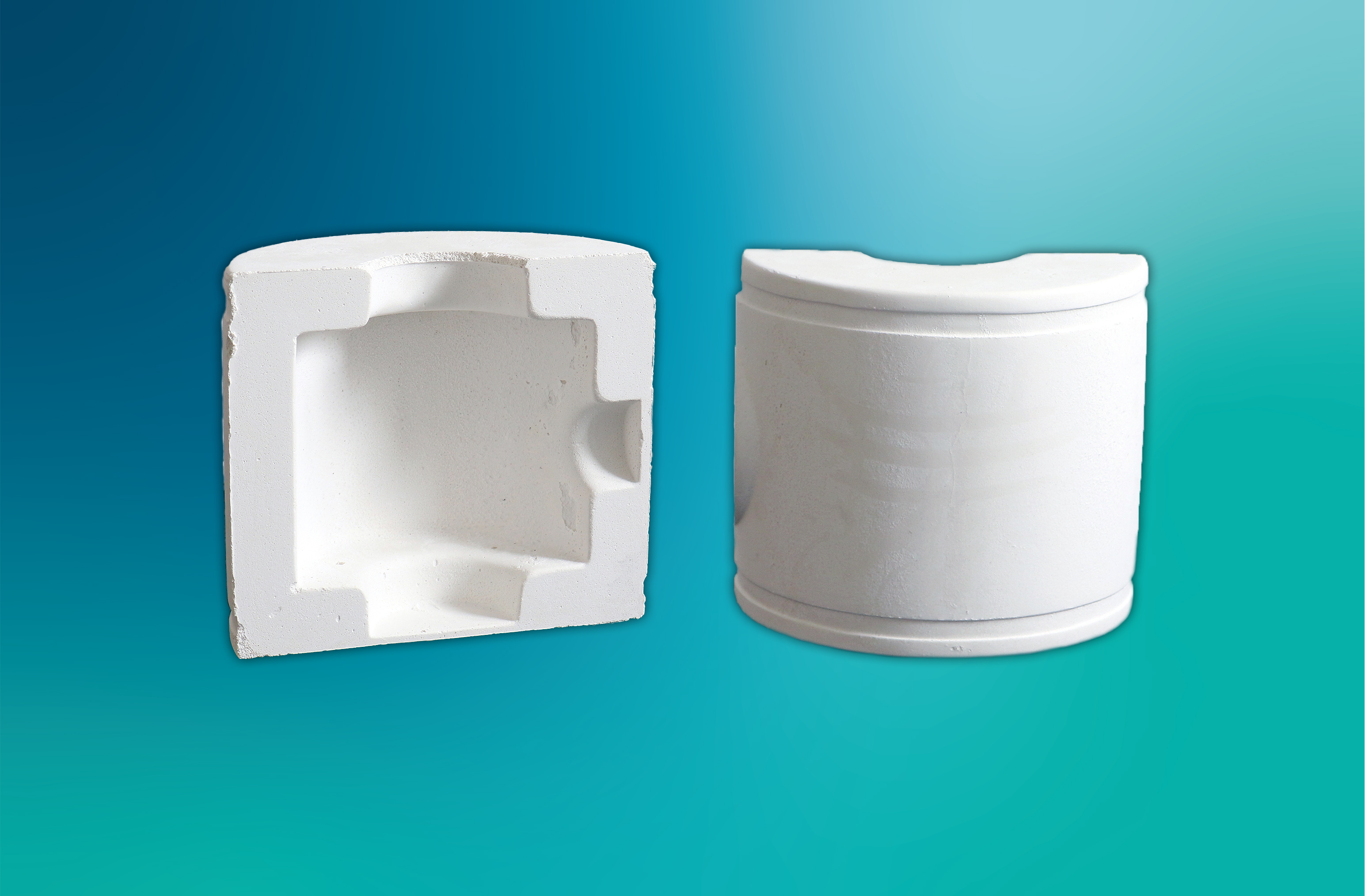Further development of a non-combustible construction foam and insulation shells for the construction industry
Researchers at the Fraunhofer WKI, in collaboration with the company IGP Chemie GmbH, have further developed a non-combustible filling and installation foam in such a way that it complies with construction-material class A1 and possesses low thermal conductivity. As a result, the installation of fire-resistant doors and windows and the sealing of openings in fire-resistant walls is simplified. In addition, the Fraunhofer WKI, in collaboration with project partner GWK Kuhlmann GmbH, has utilized the new foam in the production of prototypes for prefabricated insulation shells for fittings and valves - an innovation for fire protection in construction that will be further developed for industrial applications in a follow-up project.
Filling and installation foams based on polyurethane (PU) are currently utilized in building areas without particular fire-protection requirements. PU foams are, however, not suitable for fire-protection solutions, as they are classified – at best – as flame-retardant. The company IGP Chemie GmbH had already developed a non-combustible 2-component foam on a mineral basis. However, compared to commercially available PU foams, the foam needed to be improved with regard to its insulating effect (thermal insulation). In collaboration with the Fraunhofer WKI, the project partners IGP Chemie GmbH, GWK Kuhlmann GmbH and WF - formprojekt GmbH therefore pursued the goal of improving the formulation. “The challenge involved adapting the formulation in such a way that compliance with construction-material class A1 ‘non-combustible’ in accordance with DIN EN 13501-1 is maintained and that the thermal conductivity is low,” said Dr. Torsten Kolb, Project Manager at the Fraunhofer WKI.
Through the observation of the mechanism of action of the individual components, the project partners succeeded in optimizing the foam formulation. On the basis of these formulations, the researchers then produced test specimens. These were characterized in terms of the heat of combustion in the bomb calorimeter, the thermal conductivity and the bulk density. From this, the scientists were able to identify five formulations that achieved the requirements for the construction-material class non-combustible (A1) and that possessed low thermal conductivity.
The researchers conducted further characterization with regard to aspects such as non-combustibility, tensile and compressive strength, water absorption and foaming behavior. “Almost all the samples passed the test in the non-combustibility oven, which is required in addition to the test in the bomb calorimeter in order to achieve classification as construction-material class A1. During the test, we were able to demonstrate, with the exception of one sample, that no flammability occurred in any of the tests,” concluded Dr. Kolb.
In practical tests, the project participants succeeded in foaming the installation foam into molds in order to produce insulation boxes for the insulation of heating systems. Furthermore, the researchers tested the utilization of the fire-protection foam as a means of increasing the fire resistance of slotted plasterboard panels.
In a follow-up project, which started in November 2023, the researchers will improve the foam formulation in terms of emissions and will also optimize water absorption and thermal conductivity. Furthermore, a process is to be developed that will make it possible to produce insulation boxes on an industrial scale. For this purpose, the researchers are pursuing the goal of developing a prototype system for the production of insulation boxes for heating systems which is based on a two-component foam formulation.
The development of the non-combustible construction foam will make it easier for the construction industry to implement stringent fire-protection standards in the future. Openings and cavities in fire-resistant and highly fire-retardant construction elements can be quickly sealed with the new non-combustible construction foam. Companies in the field of technical building equipment (German: TGA) could also benefit: The fire-protection foam provides them with a simple possibility for equipping diverse technical building systems – such as heating systems – with fire-protected thermal and acoustic insulation.
Last modified:
 Fraunhofer Institute for Wood Research
Fraunhofer Institute for Wood Research 
